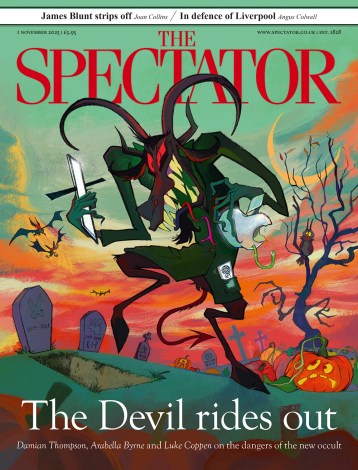Anyone walking down Oxford’s High Street could be forgiven for missing Oriel College’s statue of Cecil Rhodes. Of limited aesthetic merit, small, and at a substantial height on Oriel’s north-facing building, he looks as if someone asked Willy Wonka to sculpt a caricature of a Victorian. As recent events have reminded us, however, he is far from forgotten.
I went up to Oriel at Michaelmas 2015, and the original Rhodes Must Fall rallies were the backdrop to my first four terms at Oxford. They ranged from the mundane to the marvellously musical, and I remember eating late breakfasts at my window as protesters took turns directing poetry at the closed college gates. Even now, when I am at my desk, I occasionally miss the metronomic chants of ‘de-de-decolonise’, which used to work their way down the streets for hours.
Interest in the Rhodes Must Fall campaign died down in 2016, after the college introduced signs to contextualise Rhodes’ legacy and promised to disseminate information about the history of the figure. It has been re-kindled by recent examples of police brutality in the United States, and Black Lives Matter protests closer to home. Since the toppling of the Colston statue in Bristol on Sunday, Rhodes Must Fall has once again organised to renew calls for the removal of Oriel’s statue. On Tuesday, hundreds gathered peacefully outside the College to listen to speeches on ‘decolonising’ the University, and 26 Oxford councillors have now signed a letter saying the figure is ‘incompatible’ with the city’s ‘commitment to anti-racism’.
The argument that the statue of Rhodes at Oriel is a useful tool for learning will not save it this time. Instead of gently trying to appease a mob that will not go away, Oriel should engage with the argument. The central claim of the Rhodes Must Fall movement – that the College’s statue of Rhodes celebrates racism – is dishonest. Oriel, along with the rest of our society, does not accept that statues are endorsements of the worst crimes of the person they represent. Students do not revere Rhodes for his restriction of the franchise from black Africans in the Cape Colony, nor do they celebrate the use of convict labour in his diamond mines.
Statues up and down the country were erected to celebrate the generosity displayed by their subjects – individuals who directed their fortunes towards the advancement of others. It is this aspect of their lives that made them significant in their own day. It goes almost without saying that an historical figure should be judged by the moral standards of their time. The degree of racism exhibited by Cecil Rhodes was relatively unexceptional for his time, but his educational philanthropy was remarkable. The landscape of our society, with its innate tendency to accumulate good ideas while discarding bad ones, is littered with artefacts which serve as tangible reminders of this. These memories tell our story, and are inherently valuable for that reason.
For revolutionary activists and people intent on creating a tabula rasa on which to build a new utopian society (‘burn it down and start again’ is a phrase that has been widely thrown around by protestors in recent weeks) this idea is dangerous. However, for the majority of people, this is ordinary thinking.
If we were to condemn every historical figure for the sins of their age there would be no statues left of leaders older than a century in Britain, in Europe, in Asia or on the Indian subcontinent. At the end of last week Winston Churchill’s statue was vandalised in Parliament Square, Abraham Lincoln was covered in litter, and Mahatma Gandhi was branded ‘racist’ in bold black graffiti. If the question of worthiness is one of degree, then it seems that the mob now believes degree is dictated by fashion.
To live out the moral progress we have made, we do not need to erase the past. Nor do we need to condemn our forebears for lacking our ethical insights. We need only recognise that these statues (and the figures they depict) are remnants of a chequered past.
At Oriel a collective groan goes up whenever Rhodes is mentioned – the name of that short, chubby man is as divisive as it is uncomfortable. And yet generations of Fellows of Oriel have happily worked on their sums or pondered over Plato without espousing support for the ideology that inspired their benefactor. I have a particular and guilty pang of gratitude for his munificence myself, for in my days as a student I had to rely on the financial generosity of the College at certain difficult times during my studies. It is, in fact, hard to find a student at Oriel who has not touched the dirty Rhodes money in one way or another.
Now is surely the time to drop the nonsense about statues being wonderfully useful instruments for demonstrating the sins of our past. That may be true, but our history, with all its shades and nuances, has inherent value in and of itself. It has not gone unremarked that the Provost of Oriel, Neil Mendoza, was recently named the Government’s new Commissioner for Culture. How my alma mater now responds, under his leadership, to the renewed demands of the Rhodes Must Fall campaign will set a precedent for the way we treat our cultural artefacts from now on. I wait with bated breath.






Comments